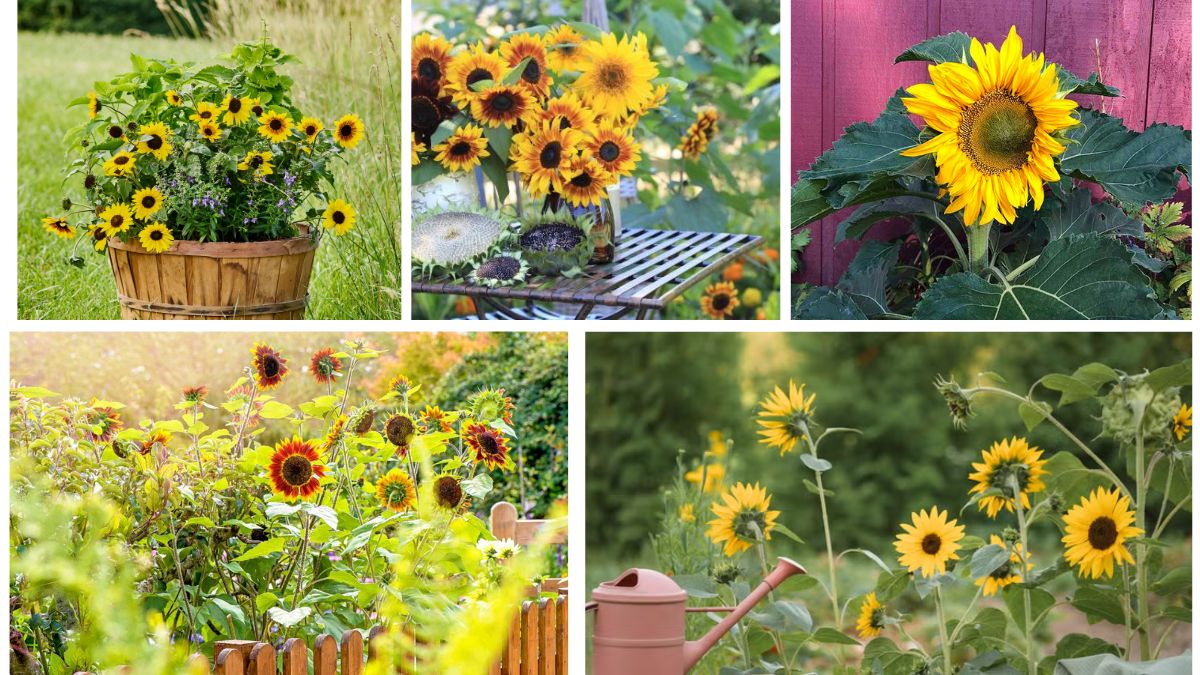Sunflowers are among the most iconic and cheerful plants in the gardening world. With their bright yellow petals and tall, majestic stalks, they instantly add a touch of warmth and vibrance to any space. Beyond their beauty, sunflowers are also useful—providing edible seeds, attracting pollinators, and even improving soil health by absorbing toxins. Fortunately, growing sunflowers at home is simple and rewarding, whether you have a large garden or just a few pots on a balcony.
In this comprehensive step-by-step guide, we will cover everything you need to know about planting, caring for, and enjoying sunflowers right at home.
Step 1: Choosing the Right Sunflower Variety
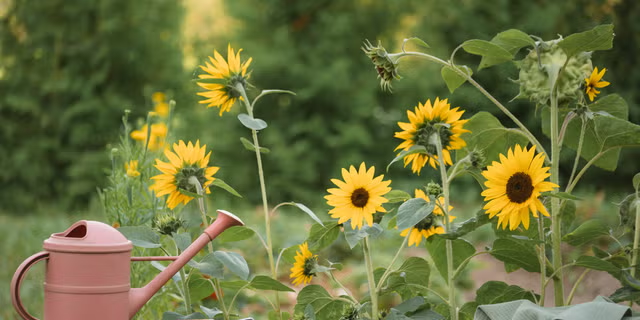
Before planting, it’s important to select the sunflower variety that suits your space and purpose. Sunflowers come in many shapes, sizes, and colors.
Popular Varieties:
- Giant Sunflowers (Mammoth varieties): Grow up to 10–12 feet tall with huge flower heads; ideal for large gardens.
- Dwarf Sunflowers (Teddy Bear, Little Becka): Compact varieties, perfect for containers and small spaces.
- Multi-Branching Sunflowers (Autumn Beauty, Lemon Queen): Produce several medium-sized blooms on one plant; great for cut flowers.
- Colored Sunflowers (Velvet Queen, Moulin Rouge): Unique red, orange, or burgundy blooms for a striking garden display.
- Edible Seed Varieties (Russian Giant): Specifically grown for producing sunflower seeds.
Tip: If you’re growing sunflowers indoors or in pots, choose dwarf or multi-branching types, as giants require more space and support.
Step 2: Preparing the Soil and Location
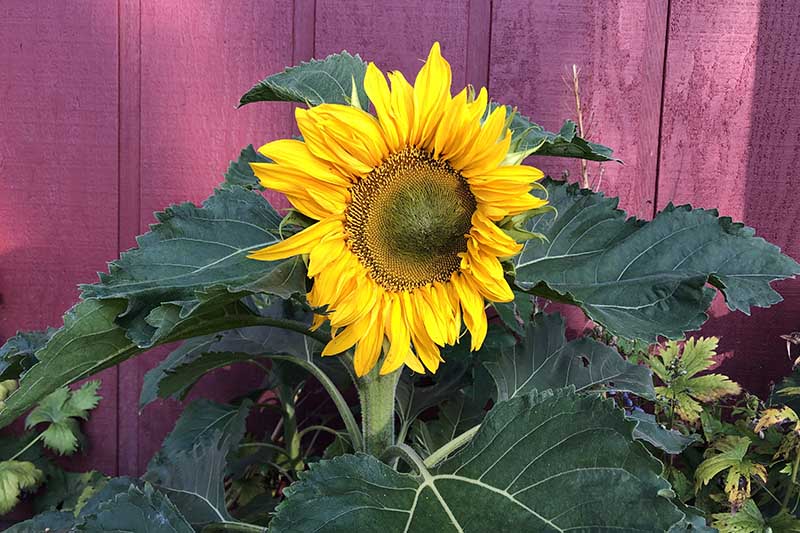
Sunflowers thrive best in full sunlight—at least 6–8 hours daily. The more light they receive, the bigger and healthier they grow.
Soil Requirements:
- Type: Loamy or sandy soil that drains well.
- pH: Slightly acidic to neutral (6.0–7.5).
- Nutrients: Sunflowers prefer nutrient-rich soil but are hardy enough to adapt. Adding compost or organic fertilizer before planting ensures stronger growth.
Tip: Avoid overly clay-heavy soil, as it can hold too much water and stunt growth.
Location Planning:
- Plant tall varieties at the back of flower beds so they don’t shade other plants.
- If growing in pots, ensure the container is at least 12–18 inches deep to support the sunflower’s long taproot.
Step 3: Planting Sunflower Seeds
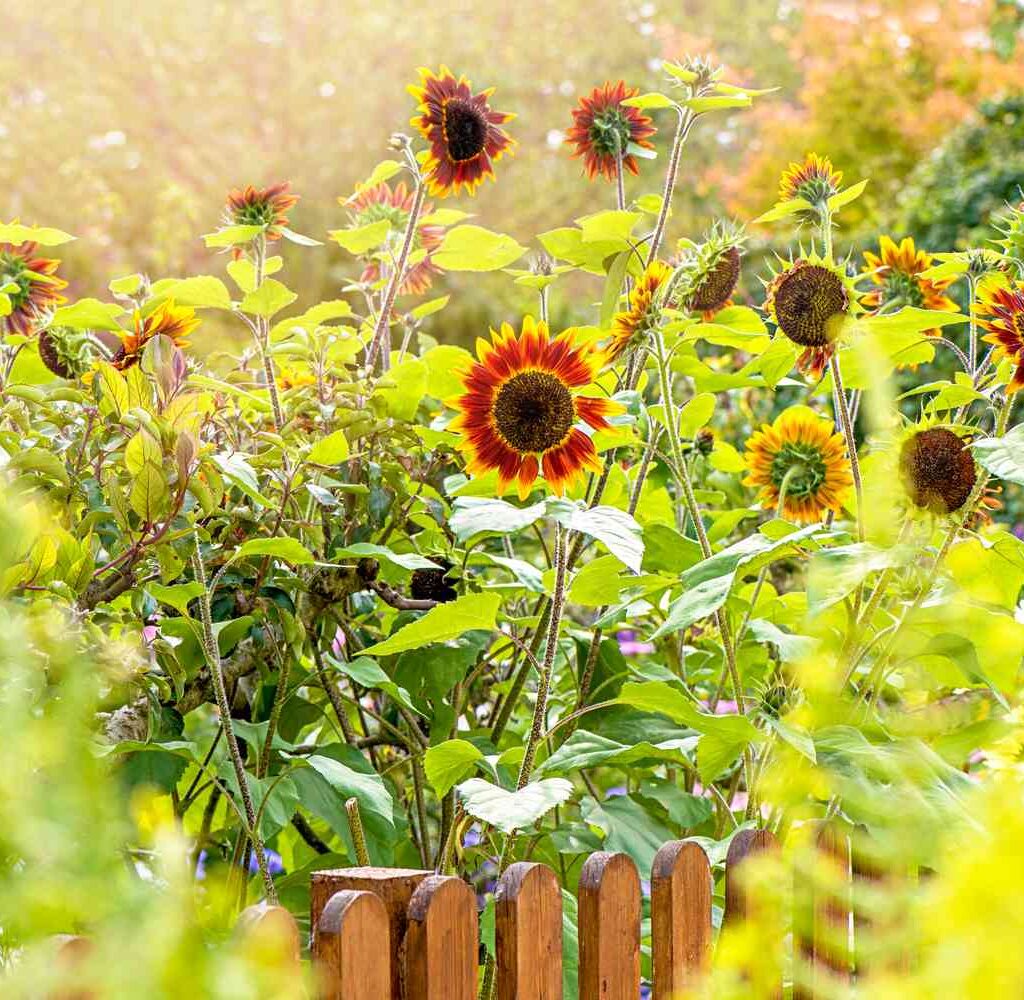
Sunflowers are best grown from seeds rather than transplants, as their roots don’t like being disturbed.
When to Plant:
- Outdoors: Plant seeds after the last frost when soil temperature is at least 55–60°F (13–16°C).
- Indoors: Start seeds 2–3 weeks before the last frost in biodegradable pots to reduce transplant shock.
Planting Method:
- Dig holes about 1–2 inches deep.
- Space seeds:
- Tall varieties: 18–24 inches apart.
- Dwarf varieties: 6–12 inches apart.
- Place 1–2 seeds per hole and cover lightly with soil.
- Water gently to moisten the soil without washing seeds away.
Tip: Plant seeds in successive batches every 2 weeks for continuous blooming throughout summer.
Step 4: Watering and Feeding Sunflowers
Watering:
- Germination: Keep soil moist until seedlings emerge (7–10 days).
- Growth stage: Water deeply once a week to encourage deep root growth.
- Hot weather: Increase frequency, but avoid overwatering as sunflowers dislike soggy soil.
Feeding:
- Use a balanced fertilizer (10-10-10) at planting.
- For tall or seed-producing varieties, switch to a phosphorus- and potassium-rich fertilizer during flowering to boost blooms and seed quality.
- Avoid excess nitrogen—it encourages leafy growth at the expense of flowers.
Step 5: Supporting Sunflower Growth
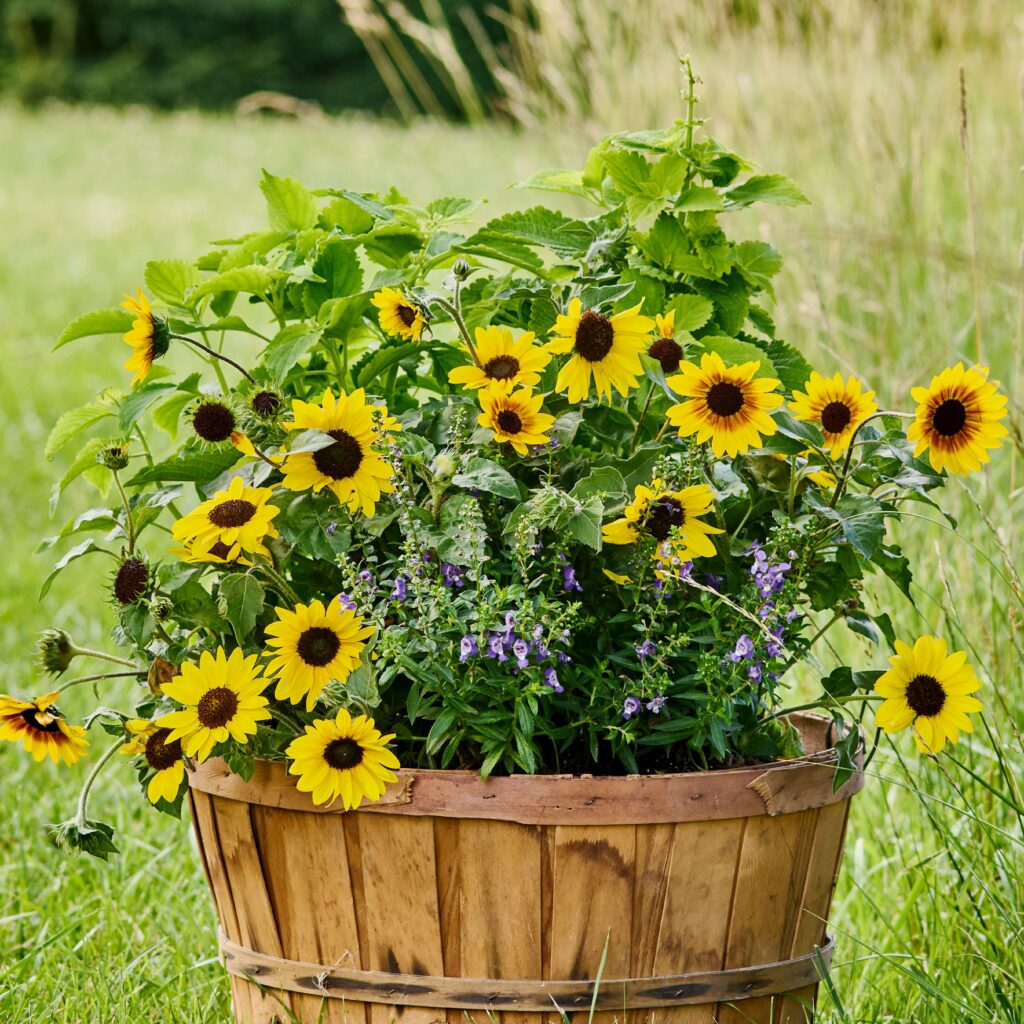
As sunflowers grow taller, they may need support to prevent bending or snapping, especially in windy conditions.
Support Tips:
- Stake tall sunflowers with bamboo poles or wooden stakes.
- Tie stems loosely with soft twine or garden ties.
- For container sunflowers, place pots in sheltered areas where wind is minimal.
Step 6: Caring for Sunflowers Through the Season
Thinning Seedlings:
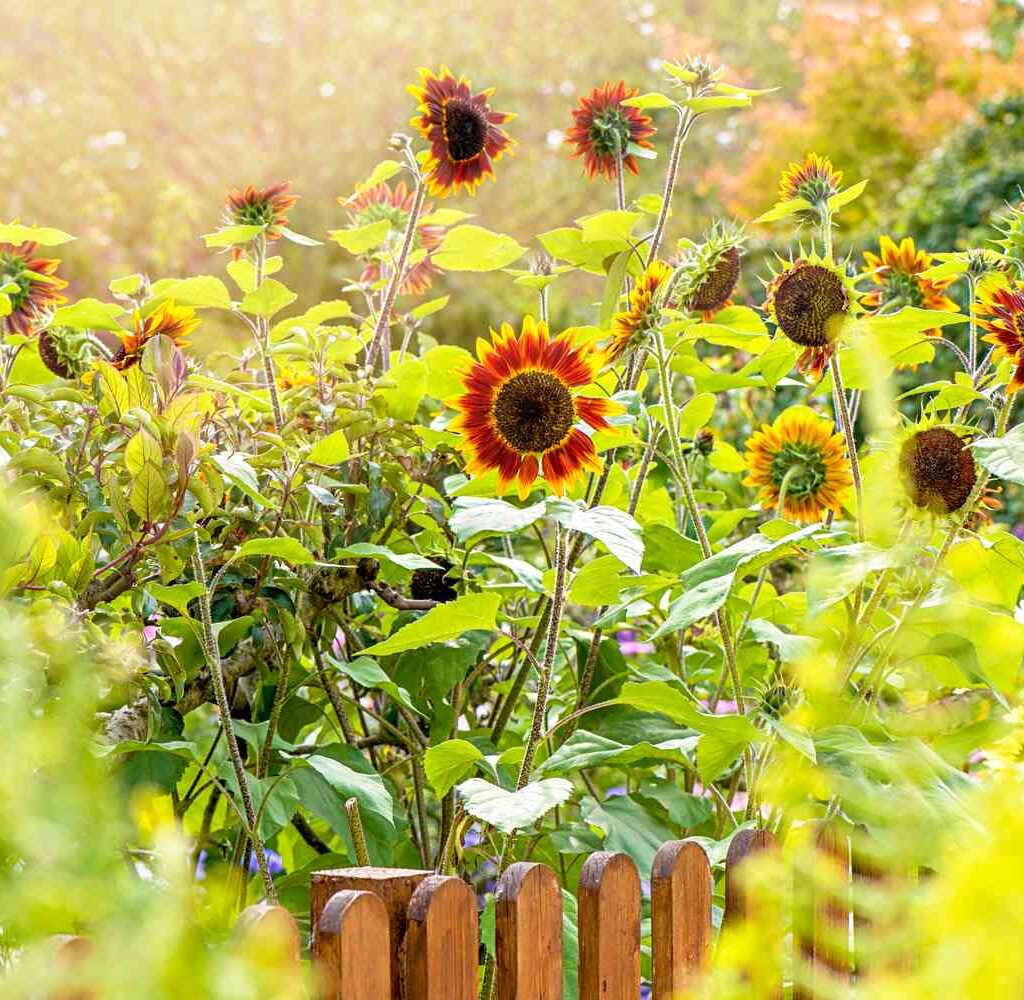
Once seedlings are 3–4 inches tall, thin them to one strong plant per hole. This ensures each plant has enough room to thrive.
Mulching:
Apply a thin layer of mulch to retain moisture, suppress weeds, and protect roots.
Pest and Disease Control:
- Common Pests: Aphids, caterpillars, and sunflower beetles. Spray with neem oil or use companion plants like marigolds.
- Birds and Squirrels: They love sunflower seeds. Protect young seedlings with netting and mature heads with paper bags or mesh.
- Diseases: Watch for mildew or fungal spots; avoid overhead watering and provide good airflow.
Step 7: Harvesting Sunflowers
Sunflowers can be enjoyed both for their ornamental beauty and edible seeds.
For Cut Flowers:
- Harvest blooms when petals are just starting to open.
- Cut in the morning and place stems in water immediately.
For Seeds:
- Wait until flower heads turn yellow-brown and the back of the head becomes dry.
- Seeds should look plump with hard shells.
- Cut the head off and let it dry indoors for 1–2 weeks.
- Rub seeds off by hand or with a brush.
- Store seeds in an airtight container.
Tip: Roast harvested seeds with a sprinkle of salt for a delicious snack.
Step 8: Saving Seeds for Next Year
If you wish to grow sunflowers again, save some seeds:
- Choose the largest and healthiest seeds from strong plants.
- Store in a cool, dry place in paper envelopes (avoid plastic, which traps moisture).
- Label with the variety and date for easy planting next season.
Benefits of Growing Sunflowers at Home
- Aesthetic Value: Bright blooms uplift garden and home décor.
- Pollinator Attraction: Bees, butterflies, and birds love sunflowers, boosting biodiversity.
- Edible Seeds: A nutritious snack rich in protein, healthy fats, and vitamin E.
- Soil Improvement: Sunflowers absorb toxins and heavy metals, acting as natural soil cleaners.
- Family-Friendly: Easy to grow, making them perfect for children’s gardening projects.
Final Thoughts
Growing sunflowers at home is an enriching experience that combines beauty, practicality, and joy. From the moment you plant the tiny seed to the time it blossoms into a golden flower, each step offers learning and reward. Whether you want to decorate your garden, harvest seeds, or simply enjoy their cheerful presence, sunflowers are one of the easiest and most fulfilling plants to grow.
By following this step-by-step guide, even beginner gardeners can cultivate stunning sunflowers that stand tall and proud in any space. With the right variety, care, and a little patience, you’ll soon be rewarded with golden blooms that brighten your home and heart.
